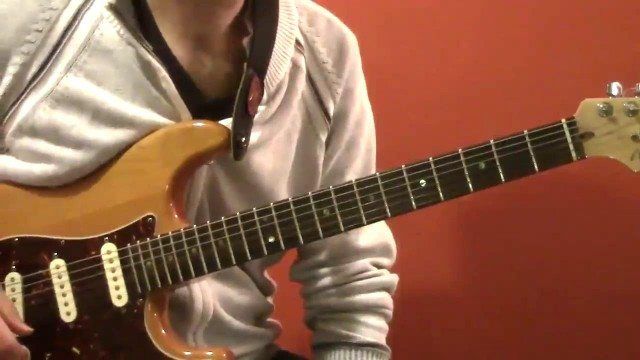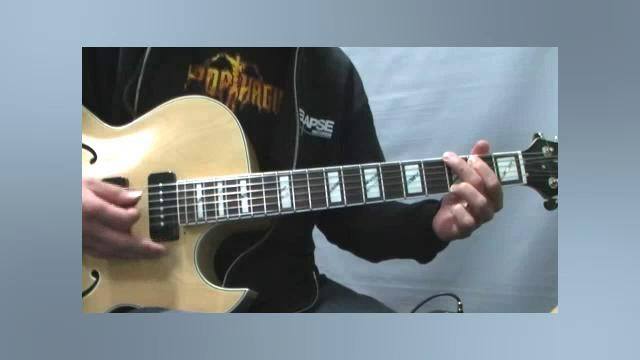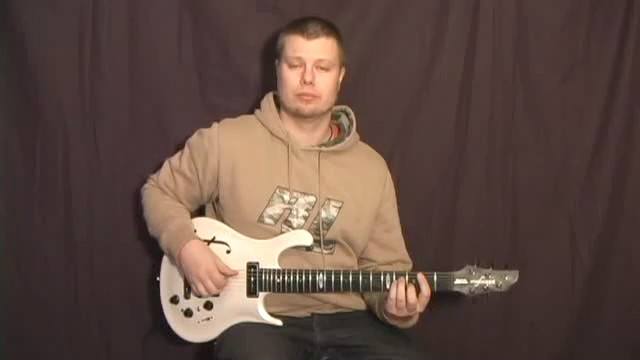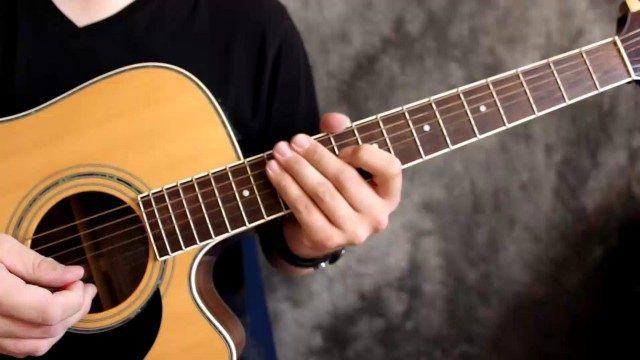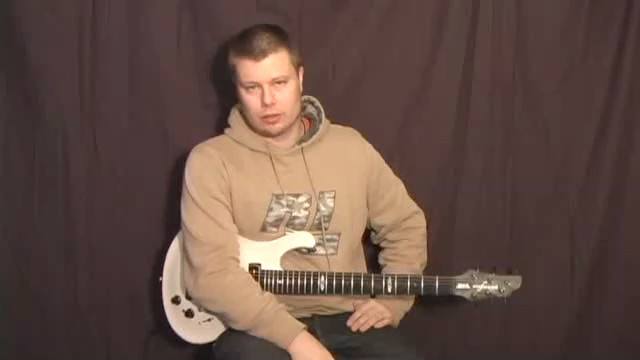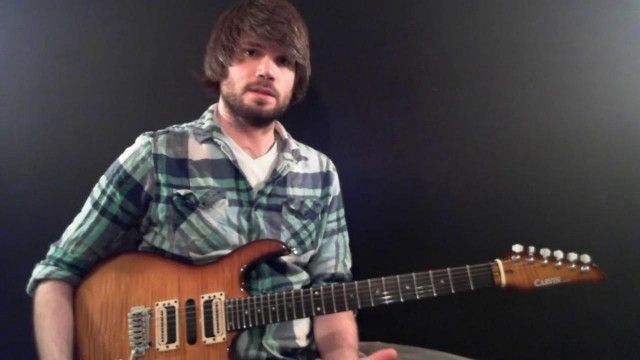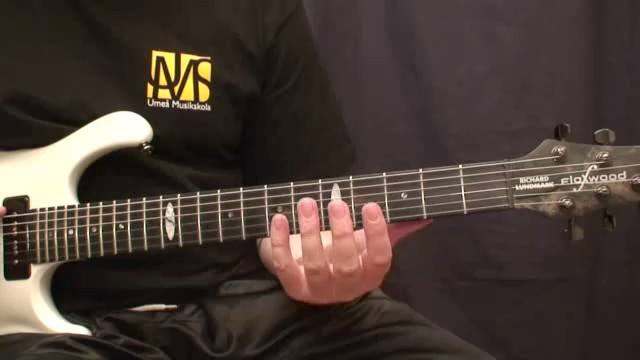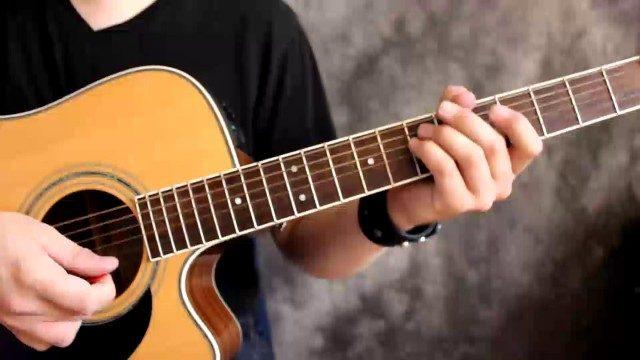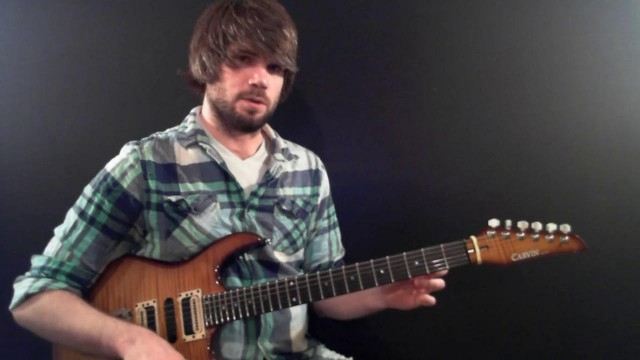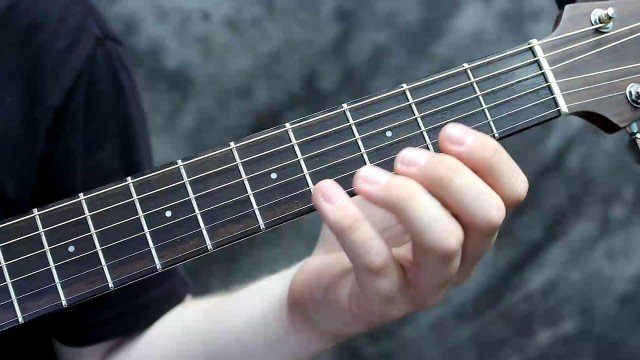Now onto the Minor 7th chord. For this 7th chord (Chord #19-21), we lower the 7th as well as the 3rd. So with this new information, we have the makeup of a minor 7th chord which is: (C-Eb-G-Bb). Intervalically, this chord can be seen as: (Root, Minor 3rd, Perfect 5th, Minor 7th). For the A form of this chord we just take the Dominant 7th form we had before and lower the E on the B string down one fret to Eb. For the E form all we do is take the dominant 7th form we had before and lower the E on the B string one fret to an Eb to get our Minor 7th chord form. And for the B form, all we do is lower the E from the dominant 7th form we had to Eb on the D string.
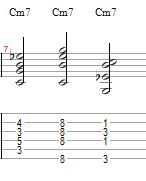
Now, to build a Minor 7th flat 5 chord (Chord #22-24), or more commonly known as a Half Diminished 7th chord, we take the original Minor 7th form we had before and we lower the 5th one half step or a minor second down to Gb, so now the formula for a Half- Diminished 7th chord would go: (C-Eb-Gb-Bb). Intervalically, this chord is seen as: (Root, Minor 3rd, Diminished 5th, Minor 7th) To build the A form of this chord, we take the original minor 7th form we had before, but lower the 5th one half step to Gb on the D string. To build the E form of this chord, we take the Minor 7th form we had before and lower the G on the B string down one fret to Eb and to build the B form, we take the minor 7th chord of that chord form and lower the 5th on the low E string one fret to Gb.
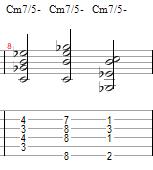
Now onto the Minor 7th sharp 5 chord (Chord #25-27). This one is built by raising the 5th up one half step to G# so now it would go (C-Eb-G#-Bb)Intervalically, this is seen as (Root, Minor 3rd, Augmented 5th, Minor 7th) The A form of this chord is built by taking the Minor 7th form and raising the 5th on the D string up one fret to G#. The E form of this chord is built from taking the Minor 7th form of this chord form and raising the 5th on the B string up one fret to G#. The B form of this chord is built by taking the original Minor 7th chord form and raising the 5th on the low E string one fret up to G#.
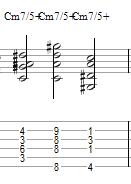
The next to last chord is going to be the 7sus4 chord (Chord #28-30), which should be pretty self explanatory, but if not, all it is, is taking the Dominant 7th form (C-E-G-Bb) and raising the 3rd up one half step to F to create a Dominant7th Suspended 4th chord, where the formula goes: (C-F-G-Bb) Intervalically, this can be seen as (Root, Perfect 4th, Perfect 5th, Minor 7th) To build the A form of this chord, we take the original Dominant 7th chord form we had before and raise the E on the B string one fret to F. To build the E form of this chord, we take the dominant 7th chord form before and raise the E on the G string up one fret to the F. To build the B form of this chord, we take the original dominant 7th chord form we had before and raise the 3rd E on the D string up one fret to F to give us our Dominant 7 sus4 chord.
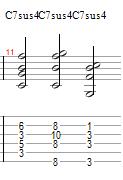
The final chord is going to be a Minor-Major 7th chord (Chord #31-33). Now, this may be a little odd sounding and a little complicated but in reality, it’s formula is: (C-Eb-G-B) All it is, is just a Minor triad (C-Eb-G) with a major 7th (B) on top of it. Intervalically, this one would go: (Root, Minor 3rd, Perfect 5th, Major 7th) To build the A form we take the original Major 7th chord form we had when we first started and lower the 3rd on the B string one fret to Eb. To get the E form of this chord, we take the original major 7th chord form we had at the start and lower the 3rd on the G string one fret to Eb. And to build the B form of this chord, we take the original Major 7th chord form we had at the start and lower the 3rd on the D string one fret to Eb to give us our Minor-Major 7th.
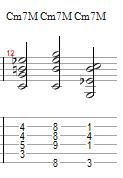
Tune into Part 4 where I will go over all the different forms of 9th chords.



